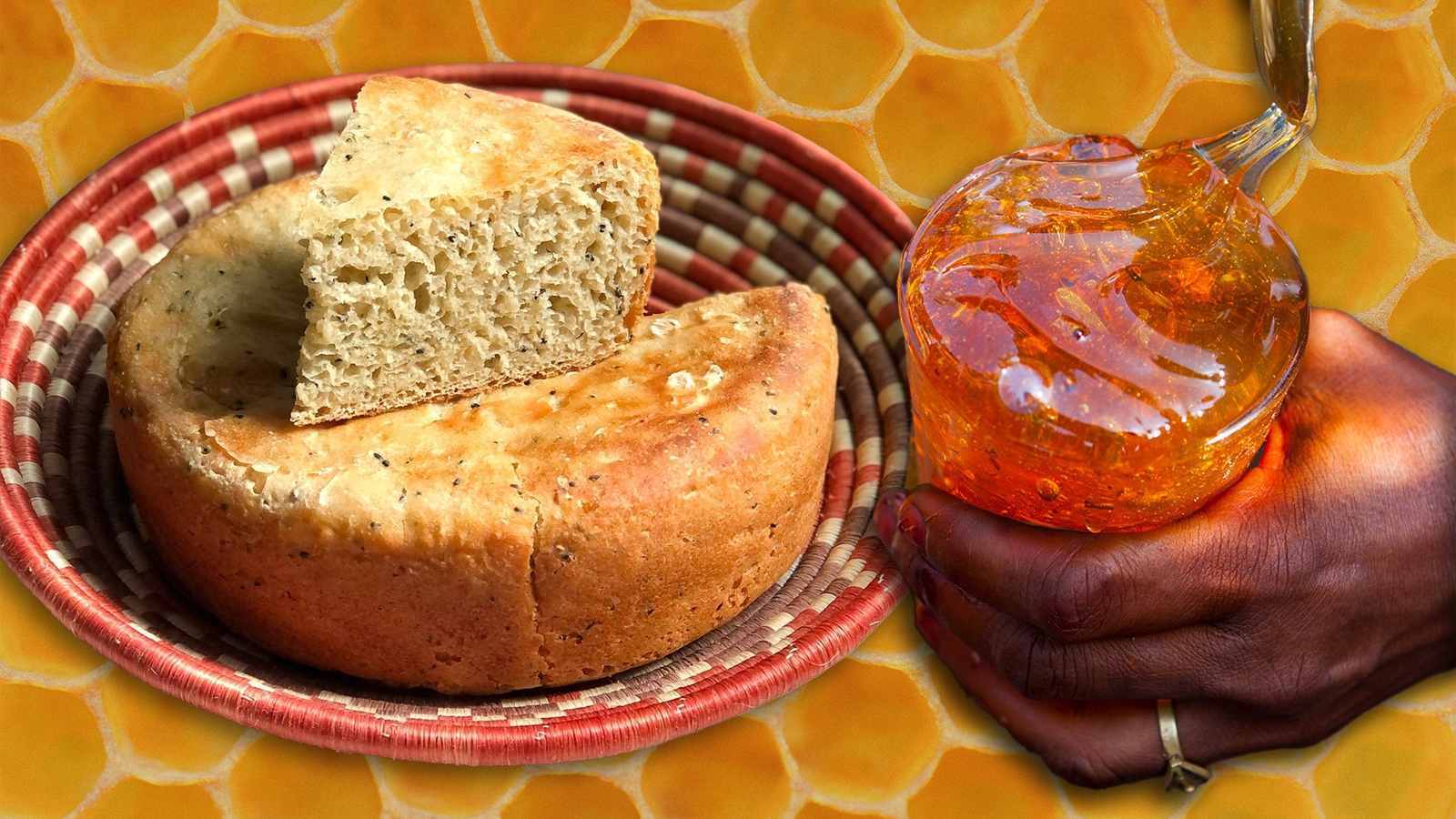As the High Holidays approach, Jewish communities around the world are hard at work in the kitchen preparing traditional foods and symbolic dishes to celebrate Rosh Hashanah. Beets, fish heads and apples are mainstays on the New Year table for many, but for Ethiopian Jews, it’s honey that plays a central role in their Rosh Hashanah celebrations.
Ethiopia is one of the honey capitals of the world, known for its rich and strong flavors, and boasting well over eight million bee colonies. Though many high-quality varieties of honey are produced in Ethiopia, one in particular is highly prized by consumers: White honey from the northernmost province of Tigray. White honey is considered a delicacy akin to truffles and caviar, particularly as it becomes increasingly rare due to the lack of rainfall caused by climate change affecting Tigray’s honey harvests. A large portion of Ethiopian Jewry can trace their origins to Tigray, and that’s exactly where the strong flavors of the honey started to be incorporated into their cuisine.
Another reason Ethiopian Jews use honey on Rosh Hashanah is to symbolize the manna the Israelites ate during their 40 years wandering in the desert, which is described in Exodus as “like honey wafers.” So, let’s take a look at the unique ways the Ethiopian Jewish community incorporates honey into their Rosh Hashanah celebrations to ensure a sweet new year.
Dabo is a traditional homemade Ethiopian bread that features on almost every Rosh Hashanah table, as well as on Shabbat and other celebrations. This round, slightly sweet bread is doused in spiced honey and has a unique spongy, crumbly texture. It’s made with a yeast dough formed from flour, water, honey and oil. The dough is left to ferment and then shaped into a large, round loaf. The loaf is then baked in the leaves of the enset tree, traditionally in a clay pot over fire, but these days on the stovetop or in the oven.
The Nosher celebrates the traditions and recipes that have brought Jews together for centuries. Donate today to keep The Nosher's stories and recipes accessible to all.
The Talmud mentions that how we act in the first month of the year sets the tone for the rest of our year. So, throughout the month of Tishrei (the first month of the Jewish year), Ethiopian Jews drizzle their dabo with a little extra honey before serving, to symbolize the sweet year they wish to have.
In addition to infusing their baked goods with honey, Ethiopian Jews also drink tej, a traditional Ethiopian honey mead, throughout their Rosh Hashanah celebrations. Tej is made by fermenting honey and water, sometimes along with gesho, a type of buckthorn plant native to Ethiopia. The gesho adds bitterness and hops-like flavor to balance out the sweetness of the honey. Spices like ginger, cinnamon and cardamom are also added.
Excavations at Aksum, the first great civilization to emerge in what is now Ethiopia, have found accounts of the consumption of tej some 1,800 years ago. The honey-based fermented beverage typically has an alcohol content of around 7-11%.
Tej has a prominent place in Ethiopian culture, especially at special occasions and holidays, and is the only real way to welcome in the New Year for Ethiopian Jews. Tej is often served in a vessel called a berele alongside small drinking cups. The holiday beverage is shared communally, with each family brewing their own keg with their preferred spices and alcohol content.
It doesn’t end there; birz is another traditional Ethiopian beverage typically made from water and fermented honey that was once used as a regular substitute for water. It’s tasty and, best of all, non-alcoholic so that even the kids can feel like they are getting in on the action during Rosh Hashanah. A friend who grew up in Ethiopia told me he drank birz every Rosh Hashanah until he was old enough to drink tej. In addition to its slightly sweet flavor, birz is also refreshing and has many health advantages. So much so that, for many, it is considered the Ethiopian Gatorade and is served at sporting events for its electrolyte properties. It’s also many Ethiopians’ comfort drink when they’re under the weather.
These honey-filled dishes and beverages hold both delicious flavors and deep symbolic meaning for Ethiopian Jews on Rosh Hashanah, helping them to reflect on the past year and look forward to the year to come. These culinary traditions also serve to connect Ethiopian Jews to family and friends celebrating far away. For those of you who won’t be enjoying a bite of delectable dabo or a swig of tej this Rosh Hashanah, you can still toast “ametun endezih yataftlen” (Amharic for “cheers to a sweet new year”), and find a deeper appreciation for the honey on your table.



